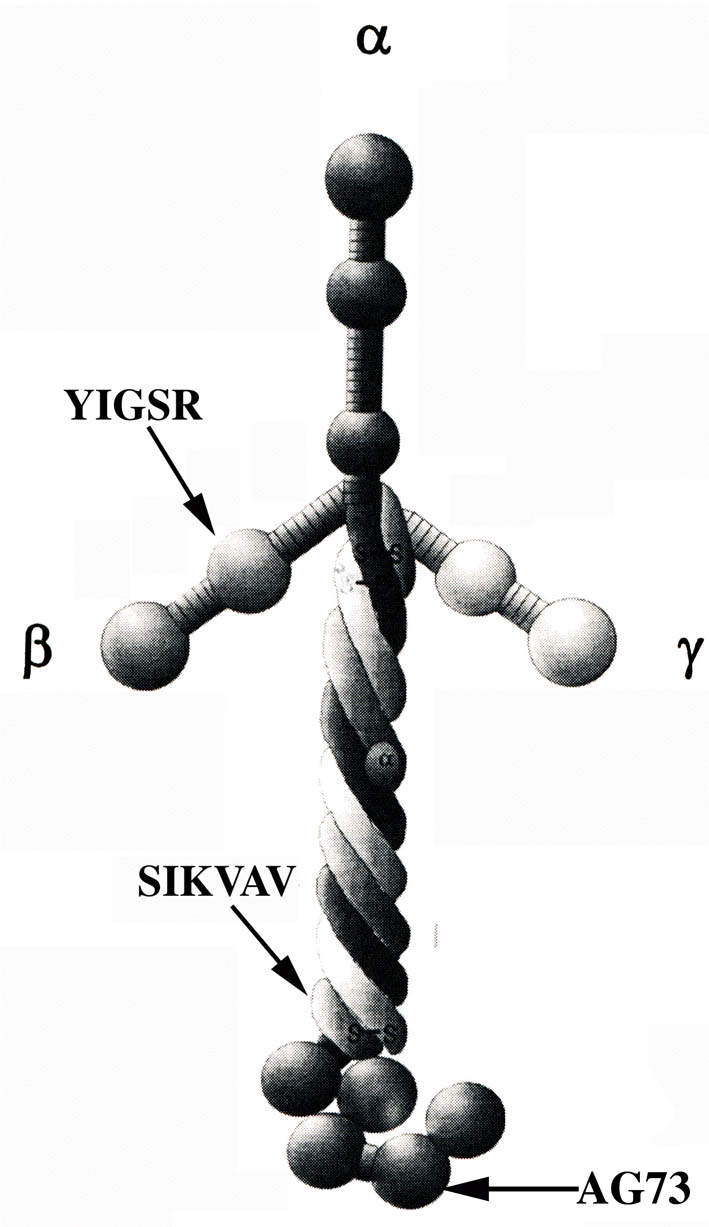

ADDRESSING BIOLOGICAL PROBLEMS
We have been studying tumor biology for 10 years. Initially, we analyzed the effect of a reconstituted basement membrane (Matrigel) in cells from benign and malignant salivary gland tumors. Our results showed that Matrigel recapitulates in vitro the phenotype of salivary gland tumors in vivo.
 Different proteins and proteoglycans compose basement membrane. We then decided to focus our efforts in understanding the role of laminin in salivary gland tumor biology. We have chosen laminin because this protein is abundant in basement membrane and regulates different cell functions. Furthermore, laminin molecule contains bioactive regulatory peptides
Different proteins and proteoglycans compose basement membrane. We then decided to focus our efforts in understanding the role of laminin in salivary gland tumor biology. We have chosen laminin because this protein is abundant in basement membrane and regulates different cell functions. Furthermore, laminin molecule contains bioactive regulatory peptides
Our first results showed that the laminin-derived peptide SIKVAV (carboxi-terminus of a1 chain) regulates morphology and protease activity of cells (CAC2) from adenoid cystic carcinoma, an important malignant salivary gland tumor (link). Another laminin peptide, AG73 (LG4 domain of a1 chain), is involved in phenotype regulation, adhesion, migration and invasion of CAC cells (link)
We characterized regulatory mechanisms underlying SIKVAV and AG73 effects in CAC2 cells. SIKVAV interacts with a3ß1, e a6ß1 integrins. Signal generated by this peptide is transduced by ERK 1/2 pathway (Freitas et al., 2007). AG73 effects in migration and invasion are mediated by b1 integrin and syndecan-1 (Gama-de-Souza et al., 2008). Similar and consistent
results were observed in others tumors, such as oral squamous cell carcinoma (Siqueira et al., 2010) and odontogenic ameloblastoma (Siqueira et al., 2010).
Currently, we have been addressing tumor biology problems through a mechanistic approach, employing combined techniques and models. We are extending our findings in salivary gland tumors by analyzing cells from different malignant neoplasms, such as oral squamous cells carcinoma, breast cancer, and fibrosarcoma
We are mapping in vivo expression of different laminin chains in carcinomas and adenocarcinomas. Clinical-pathological analysis is carried out, followed by correlation analysis between laminin expression, clinical staging and overall survival rate. A common process in malignant tumors is invasiveness, leading to breakdown of tissue barriers, and facilitating metastasis. The initial step of invasion is mediated by finger-like protrusions named invadopodia. These protrusions contain cortactin and MT1-MMP, among others proteins. We characterized invadopodia in CAC2 cells (Nascimento et al., 2010). We are investigating by 4D microscopy invadopodia dynamics in tumor cell lines treated by laminin peptides.
Last but not least, we are also exploring by microarray whether laminin peptides would regulate differential gene expression.